CBSE Worksheet for Class 5 EVS Chapter Pollution and Calamities Questions with Answers
- BoardCBSE
- TextbookNCERT
- ClassClass 5
- SubjectEVS
- ChapterCBSE Worksheet for Class 5 EVS Chapter Pollution and Calamities Questions with Answers
- Chapter NamePollution and Calamities
- CategoryWorksheets
CBSE Class 5 EVS Chapter Pollution and Calamities Worksheet Questions and Answers
Q.1 Huge floating mass of ice are called
(A) icebergs
(B) Glaciers
(C) Both
(D) None of these
Answer:
A
Q.2 A particular community is exposed excessive noise pollution, what will be result after some times to members of the community
(A) Headache
(B) Deafness
(C) Lack of sleep
(D) All of these
Answer:
D
Q.3 Harish is a nature lover. He always wants to act in an eco-friendly way whereas his brother is opposite to him. His brother always throws daily wastes and garbage in open vacant space. What advice Harish should give to his brother to minimize the pollution
(A) To throw the waste in nearby water source
(B) Bum the waste in open
(C) Collect them in big polythene and dump at distant open space
(D) Separate the wet and dry in different container
Answer:
D
Q.4 Find the substance which is not placed in proper table given below.
| Non-biodegradable | Biodegradable |
| Plastic bucket | Animal bodies |
| Iron utensils | Cotton clothes |
| Iron utensils | Fruits and vegetable peels |
| Aluminium foil | Polyester clothes |
(A) Animal bodies
(B) Polyester clothes
(C) Plastic bucket
(D) Cotton clothes
Answer:
B
Q.5 Which scale used to measure the, intensity of earthquake?
(A) Ruler scale
(B) Richter scale
(C) Barometer scale
(D) Pascal
Answer:
B
Q.6 Karnataka state suffered draught for three consecutive years. What will be the condition of water table in the state?
(A) Becomes higher due to constant evaporation, flow
(B) It remains same as the soil protects from heat
(C) Gets lower because of continuous evaporation and flow
(D) It gets replenished continuously.
Answer:
C
Q.7 Which of the following are causes of draught.
(A) Scarcity of rain fall
(B) Severe hot days
(C) Dry windy condition
(D) All of these
Answer:
D
Q.8 Wind which blows from sea to land are called
(A) Onshore wind
(B) Water wind
(C) Off shore wind
(D) None of these
Answer:
A
Q.9 Rainwater harvesting is the solution of water problem. In this method
(A) We don't use water from well to save water
(B) Stops growing crops to save water
(C) Allowing rainwater to go in rivers and seas
(D) Collecting rain water and storing it for later use
Answer:
D
Q.10 The driest place on the Earth is the
(A) Atacama desert
(B) Thar desert
(C) Sahara desert
(D) None of these
Answer:
A
Q.11 Bio-magnification is the process, in which
(A) Accumulation of harmful and toxic chemicals at each trophic level
(B) Excessive growth of weeds and plant on water surface
(C) Conversion of harmful things to useful things
(D) None of these
Answer:
A
Q.12 The reading on Richter scale above which mark can severe damage
(A) 3
(B) 5
(C) 2
(D) 1
Answer:
B
Q.13 Which of the following action is environment friendly to reduce pollution
(i) Use of unleaded petrol in vehicles
(ii) Use of pesticides and insecticides in plants
(iii) Using sewer treatment plant
(iv) Restricting smoking in public to designated space
(A) (i) and (ii)
(B) (ii) and (iii)
(C) (i) (ii) (iii)
(D) (i) (iii) and (iv)
Answer:
D
Q.14 Which of the following is not a pollutant?
(A) Lead oxide
(B) Sulphur dioxide
(C) Water vapour
(D) Nitrogen oxide
Answer:
C
Q.15 The liquid which comes out of an active volcano is called
(A) Water vapour
(B) Lava
(C) Magma
(D) Petroleum
Answer:
B
Q16. Two table of biodegradable and non-biodegradable are listed below. After Q.16 reading the table, Ramesh has made some references. Which of them is correct?
| Biodegradable | Non-biodegradable |
| Fruit | Gold chain |
| Meat | Clay pots |
| Dairy product | Cans |
(A) All non-biodegradables are hard
(B) All living things are non-biodegradable
(C) Objects from nature (livings) are biodegradable
(D) Biodegradable only comes from animals.
Answer:
C
Q.17 There many natural process which brings changes on surface of the earth. Which of the following process would bring the slowest change on earth surface?
(A) Landslides
(B) Wind
(C) Earthquake
(D) Volcano
Answer:
B
Q.18 Presence of undesirable substances in water is called
(A) Water cycle
(B) Water vegetation
(C) Water pollution
(D) Water vapour
Answer:
C
Q.19 Toxic chemicals in soil can harm by
(A) Changing weather
(B) More air pollution
(C) Disturb ground water
(D) By absorbed in food chain
Answer:
D
Q.20 Which of the following statement is correct?
(A) Crust of the earth is made up of volcano
(B) Magnitude of tsunami is measured in Richter scale
(C) Volcano can be active, dormant on extinct
(D) The liquid that comes out of a volcano is magma
Answer:
C
Q.21 Breathing problems are very common in metropolitan cities like Delhi. Doctors advise go to the rural area because
(A) These are highly polluted and populated
(B) Clean and green area in metres
(C) Unavailability of good hospital in metres
(D) Earthquake prone area
Answer:
A
Q.22 Which of the following substances can be recycled from the given substance plastic Bucket, aluminum container, newspaper, carton box
(A) Plastic bucket
(B) Aluminum container
(C) Carton box
(D) All of these
Answer:
D
Q.23 Water can be reused with which of the following methods
(A) Collect rain water to clean vegetable
(B) Collect water from leaking tap to cook
(C) Washing machine drain water to clean the toilet
(D) Washing machine water to use watering plants
Answer:
C
Q.24 Which of the following is, directly and indirectly, related to air pollution?
(A) Ecological imbalance
(B) Green-house effect
(C) Global warming
(D) All of these
Answer:
D
Q.25 Global warming is related to which set of gases
(A) Sulphur dioxide, nitrogen, carbon dioxide, ozone.
(B) Chlorofloro carbon, oxygen, nitrogen, carbon dioxide
(C) Methane, carbon dioxide, nitrous oxide, water vapour
(D) Oxygen, carbon dioxide, ozone, methane
Answer:
C
Q.26 If there is very scarce rain or no rain the crops fail to grow. This condition will lead to
(A) Famine
(B) Draught
(C) Flood
(D) Both (A) & (B)
Answer:
D
Q.27 If earthquake occurs which of the following is not a safety measure
(A) Stay indoor under a table or desk
(B) Stay outdoor away from the building or tree
(C) If on a beach, move to sea
(D) All of these
Answer:
C
Q. 28 In a pesticide contaminated ponds food chain, which contains the maximum amount of pesticides Plant
→ Small fish
→ Large fish
(A) Plants
(B) Small fish
(C) Large fish
(D) All of these
Answer:
C
Q.29 Terrace farming helps in
(A) Reducing soil erosion by non- marble land
(B) Reducing soil erosion by water
(C) Reducing soil erosion by over grazing
(D) Reducing soil erosion by deforestation
Answer:
B
Q.30 Tsunami is
(A) Flood of plane
(B) High tidal waves in sea beaches and nearly area
(C) Earthquake
(D) Volcano
Answer:
B
Free PDF download of CBSE NCERT Class 5 EVS Worksheets of Chapter Pollution and Calamities Questions with Answers
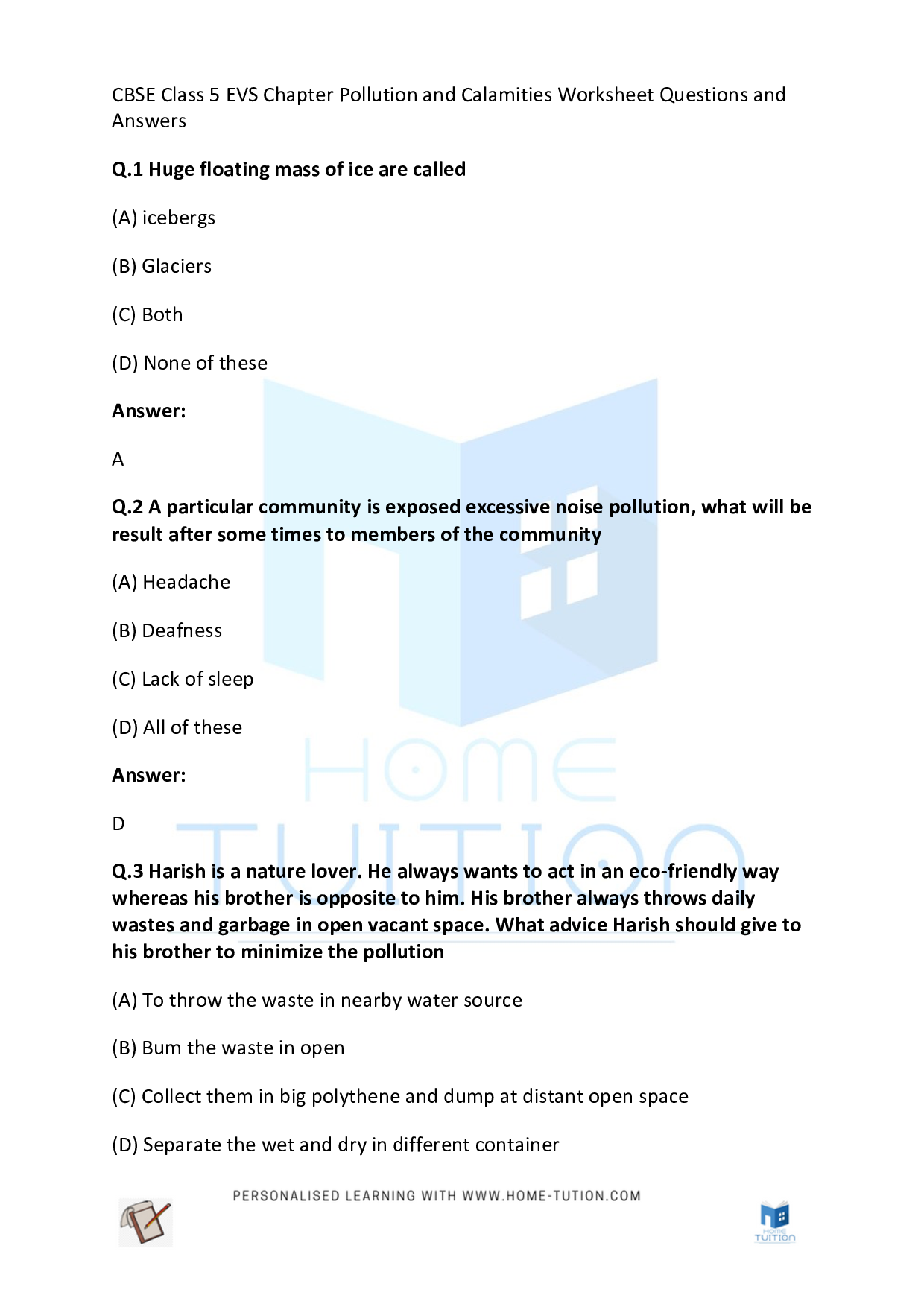
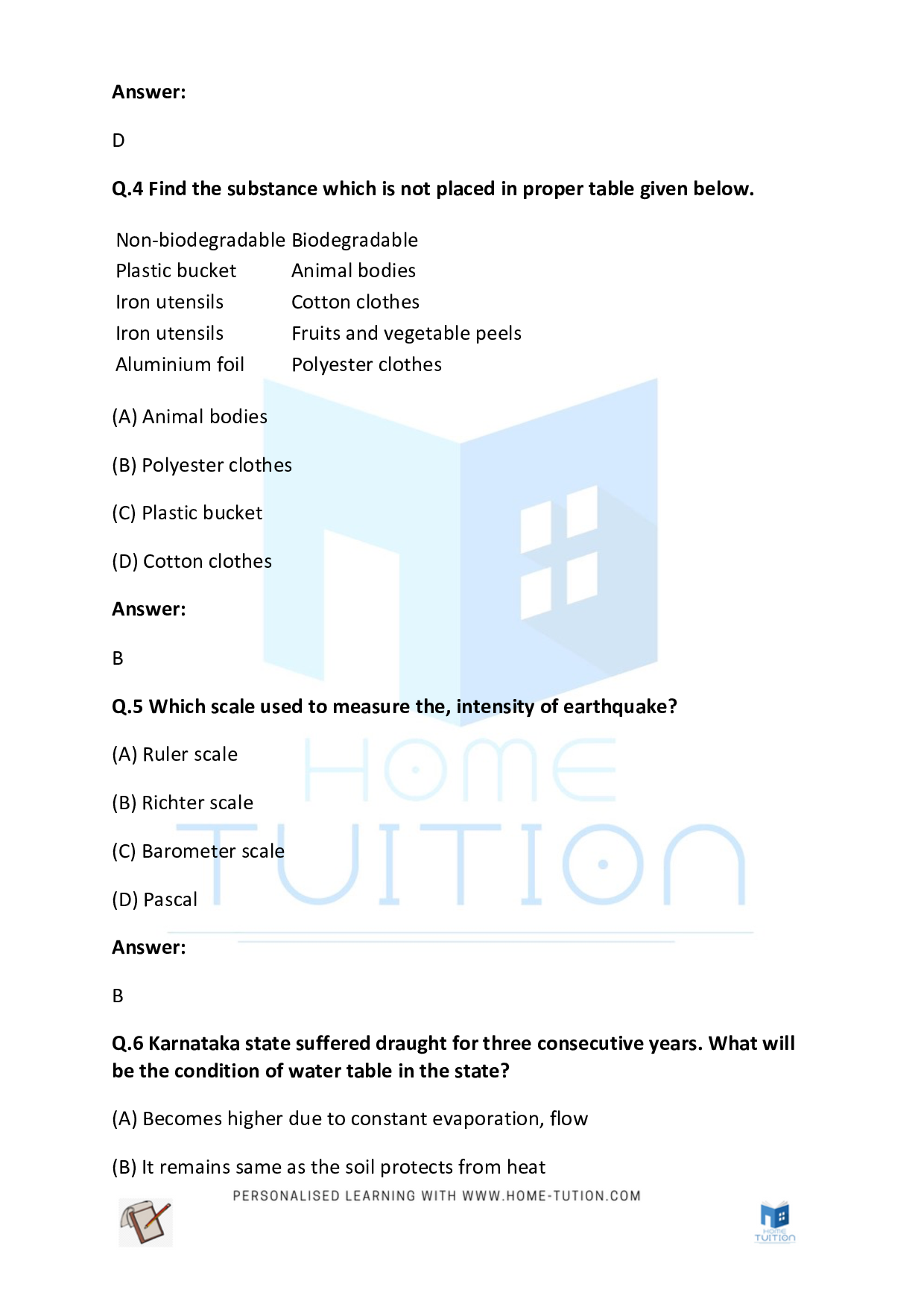
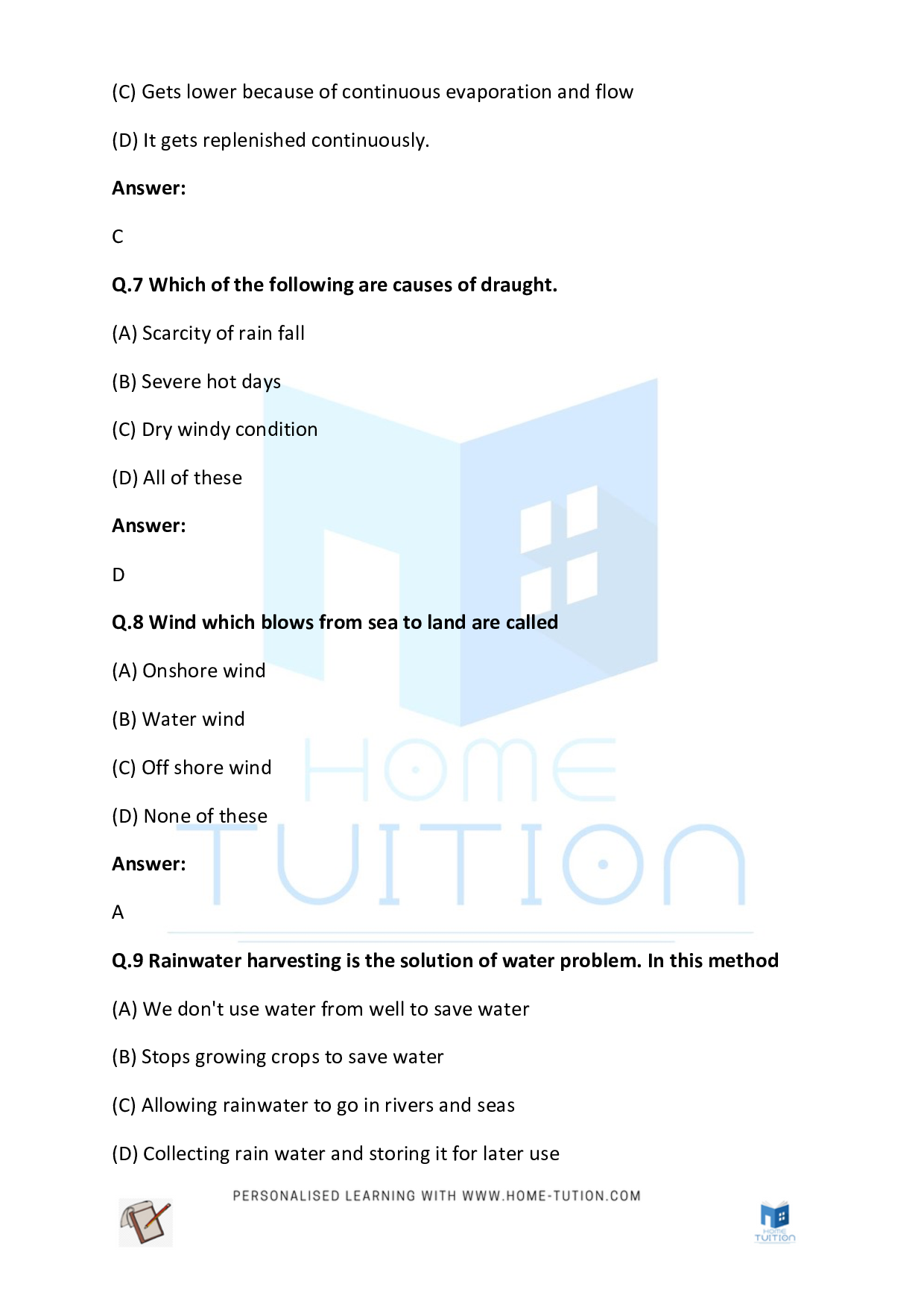
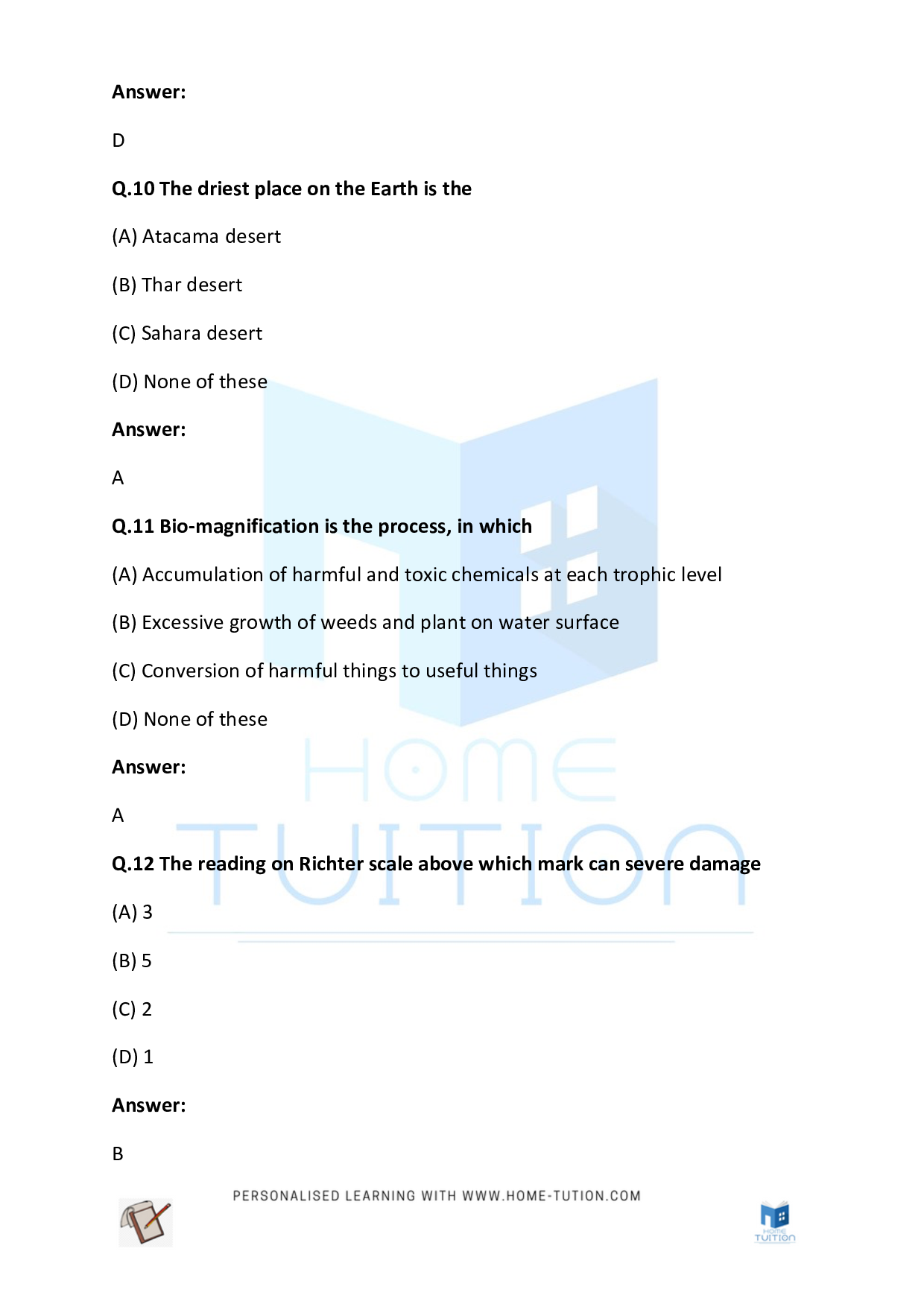
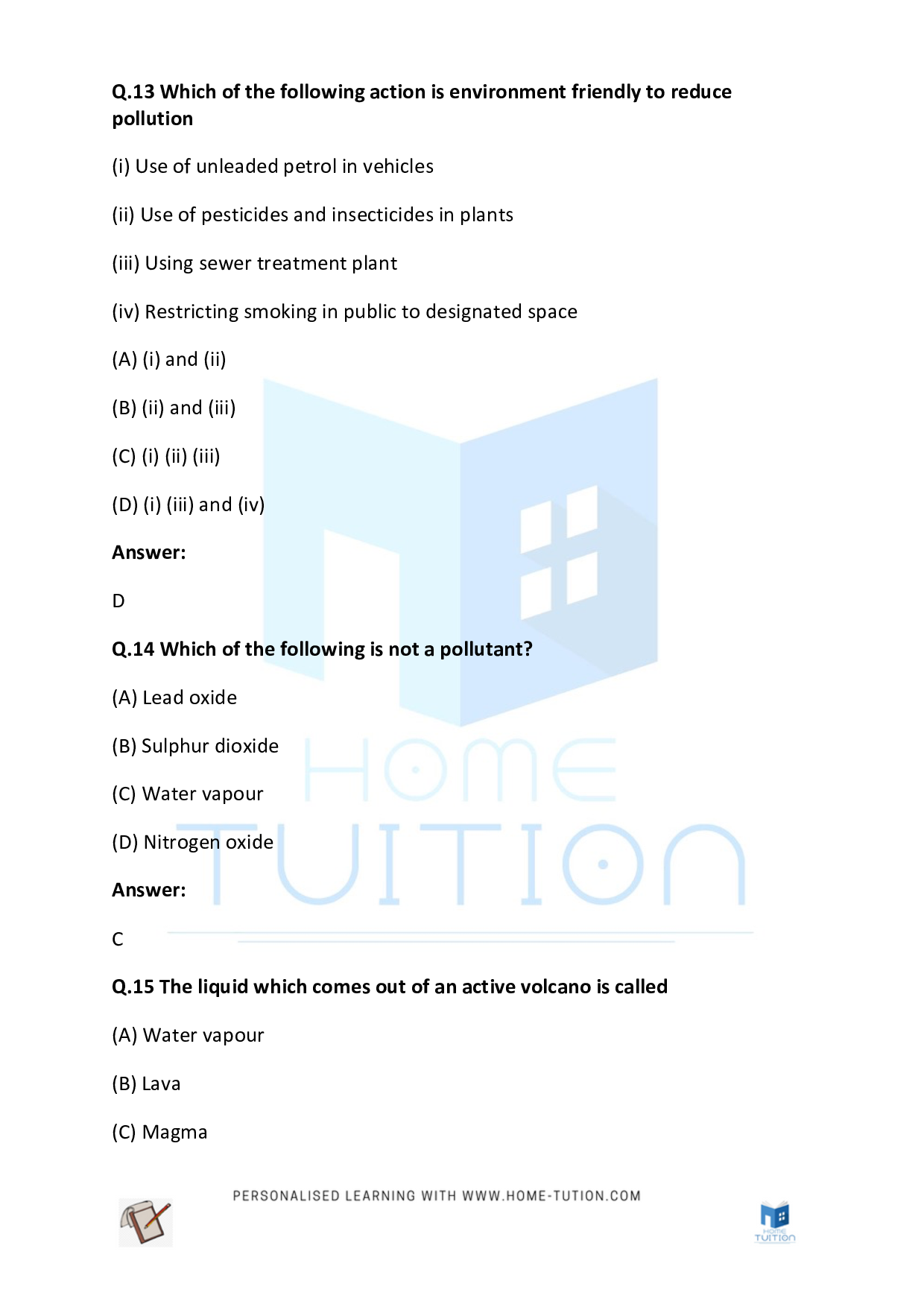
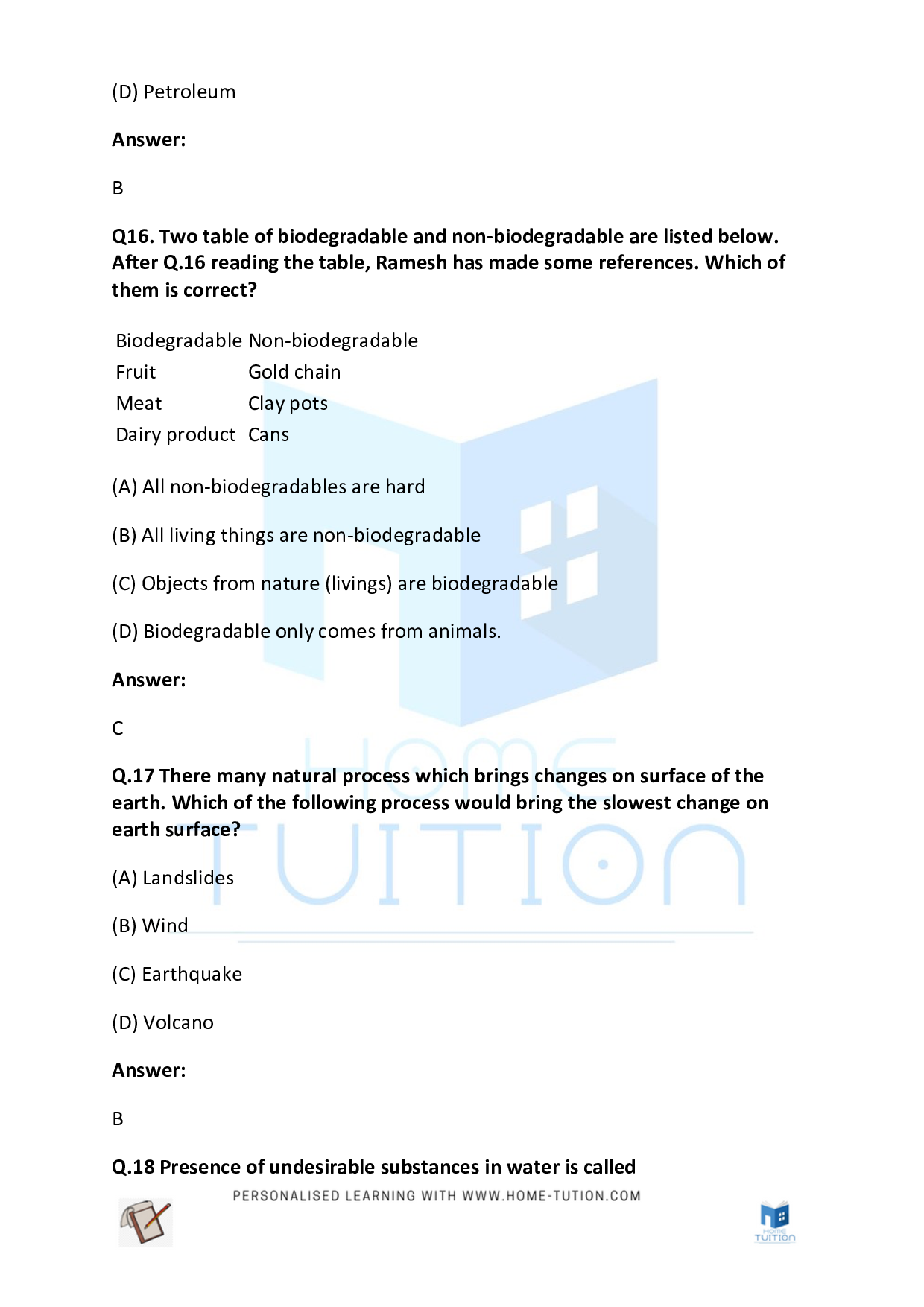

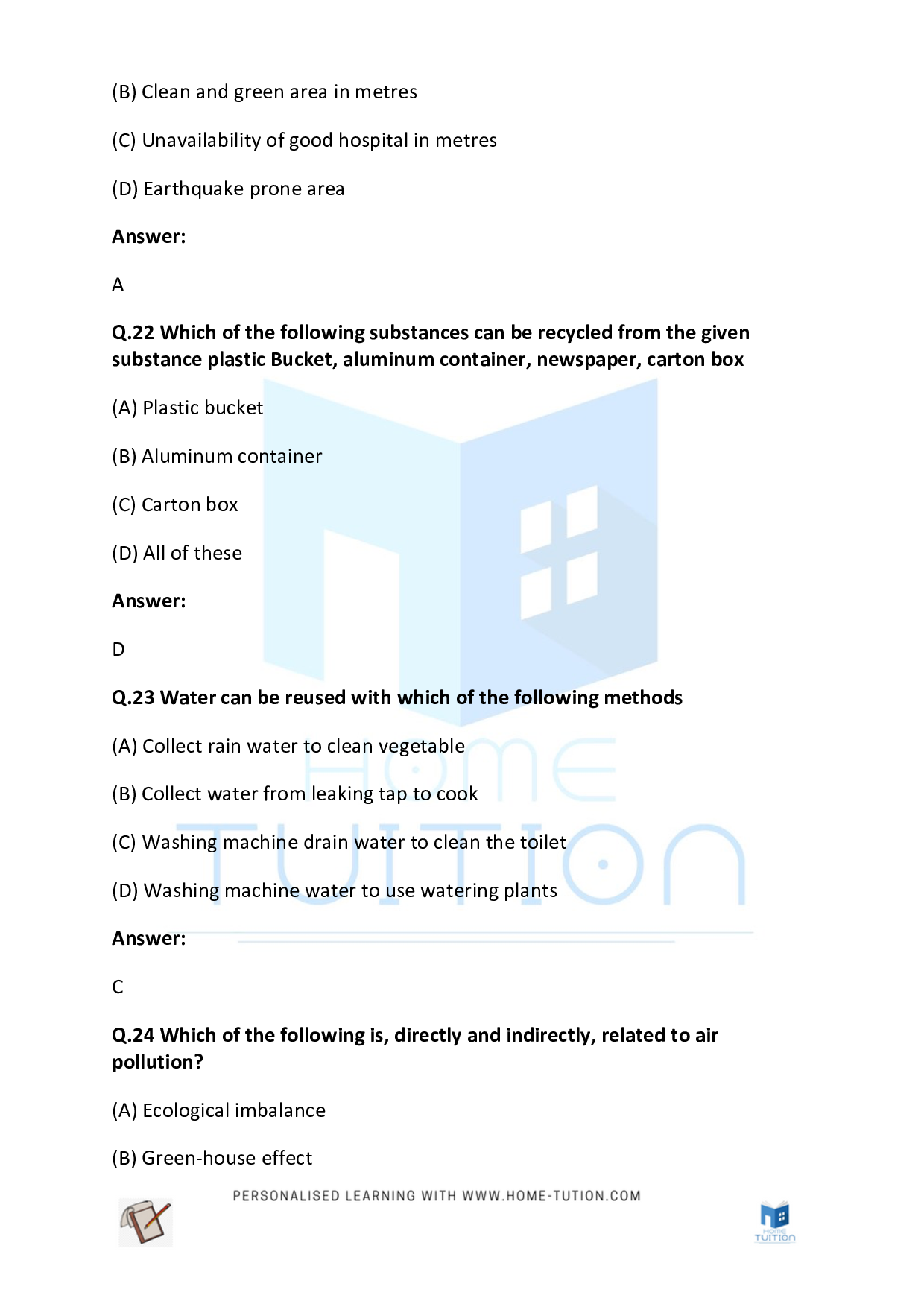


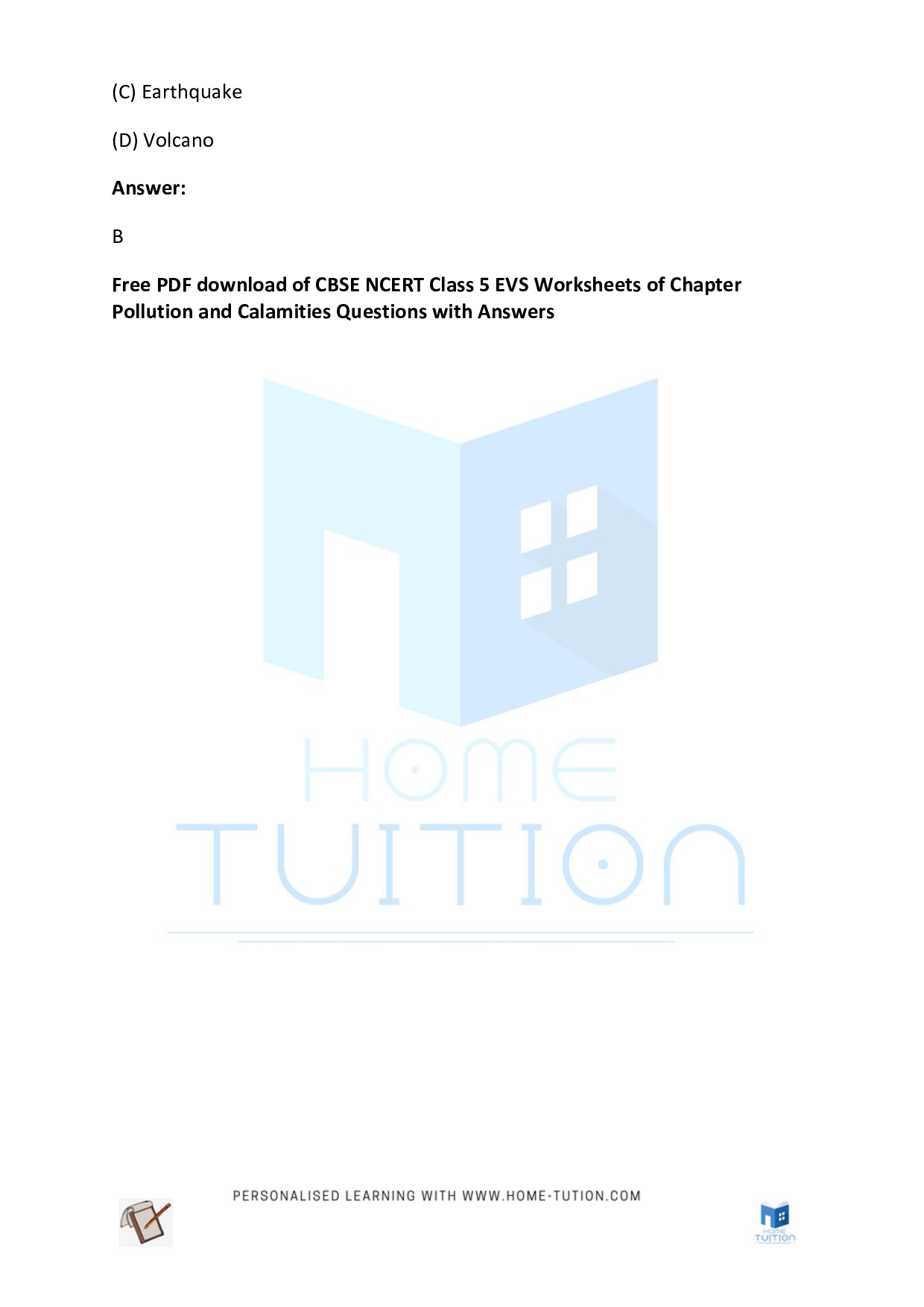
Related Links
- CBSE Class 5 Worksheet for EVS Chapter Animals Questions with Answers
- CBSE Class 5 Worksheet for EVS Chapter Matter and Materials Questions with Answers
- CBSE Class 5 Worksheet for EVS Chapter Earth Moon and Sun Questions with Answers
- CBSE Class 5 Worksheet for EVS Chapter Human Body and Their Needs Questions with Answers
- CBSE Class 5 Worksheet for EVS Chapter Light Sound and Force Questions with Answers
- CBSE Worksheet for Class 5 EVS Chapter Our Environment and Naturals Calamities Questions with Answers
- CBSE Worksheet for Class 5 EVS Chapter Rocks and Soil Questions with Answers
- CBSE Worksheet for Class 5 EVS Chapter Plant Life MCQs with Answers
- CBSE Worksheet for Class 5 EVS Chapter Pollution and Calamities Questions with Answers
- CBSE Worksheet for Class 5 EVS Chapter Safety and First Aid Questions with Answers
- CBSE Worksheet for Class 5 EVS Chapter Weather Questions with Answers